Washing machine door closing sensor
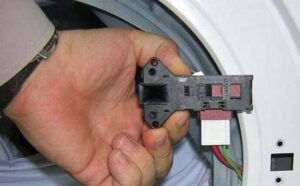 Any automatic washing machine is equipped with a door closing sensor. The element is associated with a lock, and together this mechanism is called a hatch locking device. Only after the UBL is activated, the machine can start washing.
Any automatic washing machine is equipped with a door closing sensor. The element is associated with a lock, and together this mechanism is called a hatch locking device. Only after the UBL is activated, the machine can start washing.
The washing machine door closing sensor sends a signal to the control module that the system is sealed, and the “brain” starts the cycle. If such information is not received on the board, the wash does not start. Let's figure out what the UBL consists of and how, if necessary, to check and repair the mechanism.
What does the closing module consist of?
Before disassembling the hatch locking device, it is worth understanding what it is, what parts the mechanism consists of, and how it works. Modern automatic machines are equipped with bimetallic locking locks. This module is very reliable - it will not allow the door to be opened during washing. So, the washing machine door lock includes:
- thermocouple;
- fixing “tongue”;
- bimetallic plate.
The operating principle of the door locking module is as follows: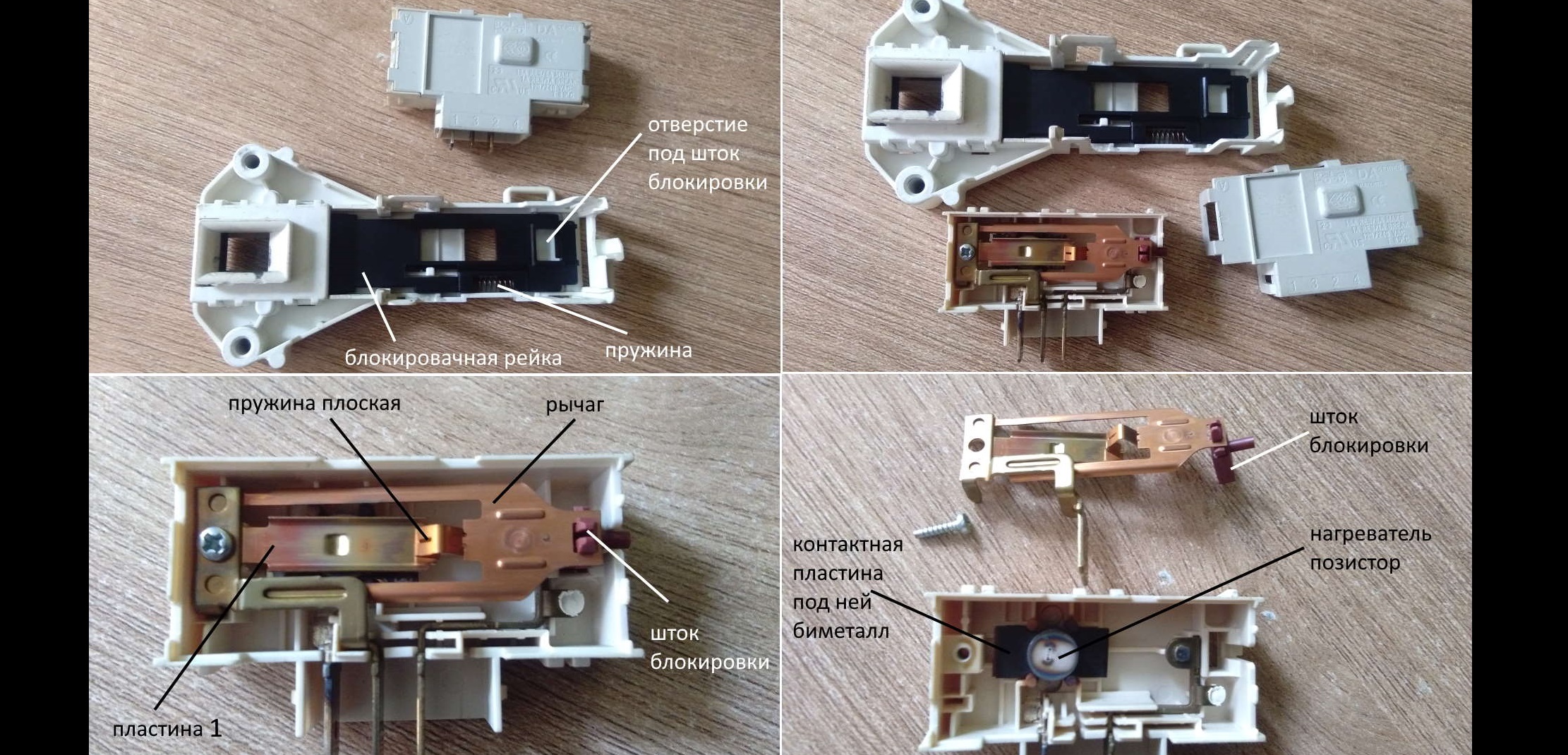
- the control unit supplies current to the lock thermocouple;
- The thermoelement heats up in 1-3 seconds;
- the charge is transferred to the bimetallic strip;
- the plate changes in size and puts pressure on the latch;
- The “tongue” falls out and remains in a special recess.
A characteristic click will notify you that the door lock has been activated.
The hatch opens in the same way, only all steps are performed in reverse order. When the current supply is stopped, the bimetallic plate changes shape, the latch “comes out” of the groove and “falls” into place. The door lock is removed.
It should be understood that on most models of washing machines, the UBL operates only 1-3 minutes after the completion of the cycle. Therefore, you should not forcefully try to open the door right away. You need to wait until the plate cools down and the control module makes sure that there is definitely no water left in the tank.
If the hatch does not open even after 10-20 minutes, most likely the mechanism has malfunctioned. For what reason the blocker may break, how to check and repair it, we will tell you further. The locking device is located on the front wall of the housing, to the right of the drum door. Its location is revealed by a small rectangle that protrudes slightly outward. This is exactly the groove where the “tongue” of the lock fits.
What causes breakdowns?
The washing machine door closing sensor usually breaks down for two reasons. Most often, the malfunction of the lock is caused by simple wear and tear of the mechanism parts due to long-term operation of the machine. So, over and over again, when heated, the plate deteriorates, and after a few years the fixation weakens to a minimum. If this is the case, repairing the lock will be impractical; it is better to remove the old one and install a new UBL.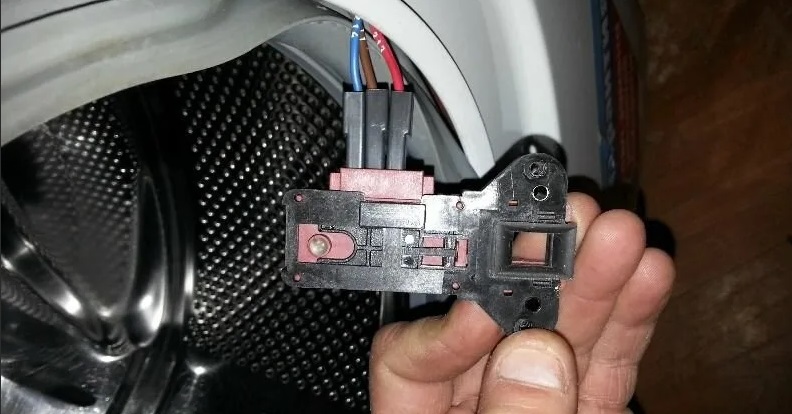
In addition, problems with the electronics of the machine may cause a malfunction of the locking device. The issue may be that:
- voltage drops in the electrical network “break through” the thermal element of the lock, it stops heating and transferring charge to the plate and hook;
- The triac on the board, which is responsible for the operation of the blocker, closes, as a result of which current is constantly supplied to the UBL, so the door lock is not removed.
Mechanical reasons also lead to disruption of the UBL operation.The door may not come off if there is sagging or the hinges on which it is attached are deformed. In addition, the “tongue” itself in the lock may break. To prevent such problems, it is important not to hang things on the hatch and not allow children to ride on it.
Understanding the principle of operation and the design of the locking lock, you can independently determine the cause of the breakdown. We'll tell you how to diagnose the mechanism yourself. Having found the problem, all that remains is to fix it and continue washing.
How to test a part?
It is usually very easy to recognize that the door locking device is faulty. With such a problem, the washer clearly indicates a problem. Among the main “symptoms”:
- the hatch does not swing open, even after 1-2 hours have passed since the end of the wash;
- the corresponding error code is displayed on the display or the LED of the “Start/Pause” button on the “tidy” blinks 17 times (other indicators may also light up, this depends on the model of the washing machine);
- the door does not swing open even when the washing machine is disconnected from the electrical network;
- After starting the wash, the lock does not work and the machine does not start the cycle.
How to check if the door closing sensor of a washing machine is working? You can perform diagnostics using a multimeter. First, you should look at the instructions and study the electrical circuit of the washing machine. This will help to understand where the phase is located, as well as the neutral and common contacts of the UBL. Afterwards you can begin dismantling the blocker. You need to proceed as follows:
- turn off the power to the automatic machine;
- close the valve responsible for the water supply;
- disconnect equipment from communications;
- open the hatch;
- unscrew the bolts securing the UBL;

- Unscrew a pair of screws holding the top cover of the washing machine;
- push the panel towards you and remove;
- put your hand down, moving towards the blocker (it is located to the right of the cuff);
- unhook the wires connected to the lock;
- remove the device from the case.
Afterwards, you can “arm yourself” with a multimeter, switch it to resistance determination mode and lean the tester probes against the neutral contact and the lock phase. A three-digit number should appear on the display. If the value does not match, replace the UBL. At the next stage of testing, it is necessary to attach the wires to the common contact and phase. Using a screwdriver, you need to move the “tongue” of the lock into the working position and connect the device to the network. A working blocker will click, a broken one will remain silent.
If the diagnostics does not reveal any problems with the lock, inspect the hinges. They may be warped, causing the door to sag. Also, the reason for the machine’s reluctance to block the hatch may be mechanical damage to the “tongue” of the mechanism. Be sure to check this guess as well.
How can you tell if the closing sensor is broken?
Knowing the principle of operation of the door lock, it will not be difficult for the user to guess about its malfunction. The behavior of the automatic machine will immediately reveal the problem. As already mentioned, you can suspect a problem with the locking mechanism if:
- the door lock cannot be removed long after the wash is completed;
- the machine issues a fault code corresponding to this problem;
- The “brain” does not block the door after selecting the desired mode and starting the cycle.
The hatch locking device ensures the tightness of the system - the mechanism will not allow a person to open the door when there is water in the tank.
An alarm bell will ring when you need to press on the machine door every time you start the wash to activate the UBL.This indicates a weakening of the lock - it is better to check immediately and, if necessary, replace the lock.
Interesting:
Reader comments
- Share your opinion - leave a comment

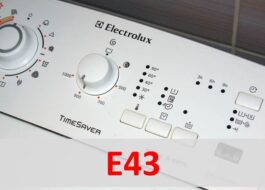

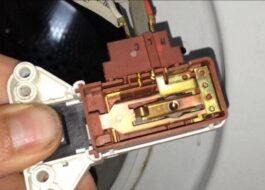
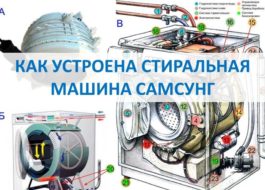
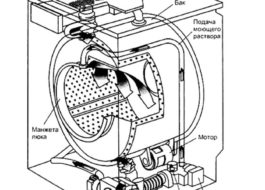
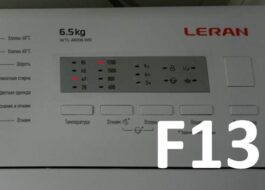














Add a comment